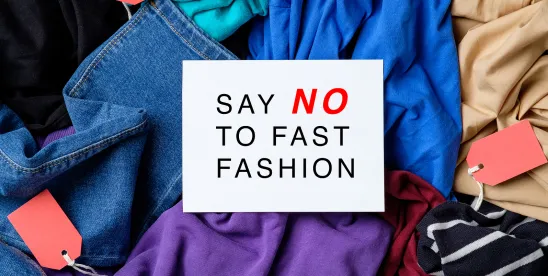In the age of the "I want it cheap, and I want it now" consumer mentality, fast fashion brands primarily based in China have established and maintained dominance in the retail market. According to US Customs and Border Protection (CBP), the United States imported $66 billion in low-value packages in 2023. Additionally, between 2018 and 2021, 67.4 percent of de minimis shipments came from China and Hong Kong.
However, now that President Donald Trump has signed an Executive Order imposing "reciprocal" tariffs on dozens of foreign trade countries and eliminating the duty-free de minimis exemption for imports — which would have allowed up to $800 in goods per day per person to be imported without any imposition of tariffs and administrative fees — the fate of fast fashion is uncertain.
As a result of these tariffs, packages sent from China valued at or under $800 that would otherwise have qualified for the de minimis exemption are now subject to a duty rate of 30 percent of their value or $50 per item, depending on which cost is greater.
Impact on Fast Fashion
The new tariffs were expected to slow the fast fashion industry by eliminating low costs, the integral characteristic that primarily attracts consumers. However, while several Chinese-based fast fashion brands have increased their prices, the definitive demise of fast fashion is unlikely.
While the market shows that consumption tends to decrease when prices rise, this behavior is largely attributed only to the younger demographics. For most other customers, when fashion prices rise, consumption patterns largely do not decrease despite price sensitivity. According to Forbes, "behavioral change rarely happens purely through economic friction alone." Furthermore, in order to avoid these tariffs, companies have redirected production to other countries with lower tariffs and labor costs, such as Vietnam, Cambodia and the Philippines.
Balancing Profitability with Sustainability
Several companies have even offered to cover the cost of tariffs that would otherwise be imposed on the customer. Unfortunately, covering the cost of tariffs may not be feasible for certain fashion brands that operate on tighter margins, making the fight against fast fashion even more difficult. Tariffs impose high costs on all fashion brands, causing them to balance profitability with sustainability efforts. According to Earth Day, "This often results in factory owners — who operate on slim margins — reducing wages, speeding up production, or shifting manufacturing to countries with weaker labor protections to meet the lower price demands."
Tariffs are not able to differentiate between a dress that costs less than $5, made in a factory with poor labor standards, and a designer dress made by workers earning living wages. According to an analysis by Business Insider, "fast fashion production comprises 10% of total global carbon emissions, as much as the emissions generated by the European Union… Even washing clothes produced by fast fashion factories releases 500,000 tons of microfibers into the ocean each year, the equivalent of 50 billion plastic bottles."
Conclusion
In theory, these tariffs could be an effective solution to combating the unethical practices used in the fast fashion industry. However, as the market has shown, where there is a will, there is a way. Tariffs alone are not enough to ensure a shift toward sustainability in the fashion industry.
*Chloe Crissman, a 2025 summer associate, authored this article.



 />i
/>i
